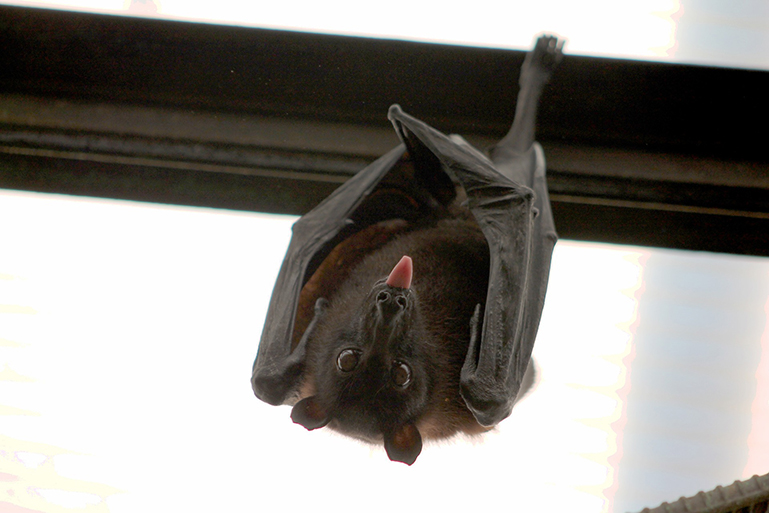Bat Removal
Bats carry many parasites such as mites, ticks, chiggers, and parasitic flies, to name a few. Internally, they can carry tapeworms and roundworms. Bats with rabies may venture out and bite humans or large animals, such as cattle.
Call (219) 707-1968 to learn more about bat removal, trapping, control, and repair of any damage caused by the bats in Northwest Indiana.

Bats play a valuable role in nature.
Their most common role is eating mosquitoes. Bats eat almost any flying insect when foraging for food, but mosquitoes are the big one. Some bats will eat as much as 4 lbs. of mosquitoes per day. One million bats will eat around 700,000 tons of insects per year! This means that bats can actually be a bit more beneficial for your home than you think, but it is understandable that most homeowners don’t want bats over-running their homes. The only time a bat should ever be killed is if it needs to be tested for rabies. Other than rabies testing, there are plenty of safe and effective means for bat removal. Most species of bats are protected by state law throughout the United States. Knowingly killing, harming, or destroying a bat in its habitat can be punishable by law. Whatever species of bat you find in your home or property, it’s best to leave it alone and call a professional. We have very many effective and humane ways of getting rid of bats from your establishment and keeping them away for good. Shamrock wildlife services would be happy to assist you in removing bats that call your home theirs! Although there are a number of different bat species in Indiana, the two main species are the little brown bat and the big brown bat. They are very similar looking, and it can be difficult to distinguish the difference between the two.
What to do if you know bats are roosting (living) in your attic:
If you find a colony of bats living in your attic or walls, you should give us a call right away at (219)-707-1968. We provide what is called a “bat exclusion” to remove bats from a home. A bat exclusion is the process of installing a 1-way cone for the bats to leave through in tandem with closing off any potential entry points for a bat. Bats can fit through a dime-sized hole, so we have to be very inclusive with sealing a house to completely rid it of a bat issue.
Most species of bats are protected and endangered.
There are a couple times of year we as wildlife control specialists need to respect for the well being of the bats. From June 1st to August 15th bats are raising their young. The mother bat leaves her babies or (pups) inside the attic or wherever they are roosting at the time so she can go out at night and forage for food. If we were to remove these bats during this time the pups would be unable to fly out of our one-way doors, and then would end up dying in your attic of starvation. This could cause a smell or a possible spot on the ceiling where they might have fallen. It is very important to refrain from removing any bats during this time and wait until August 15th when the pups can forage and live on their own, outside of your home. The second time of year we should not remove bats is during the winter. Bats hibernate during the winter because there are not enough insects for them to feed on. If we find bats in your home during this time of year, it’s best to just leave them alone and wait until spring. August is the peak season for bat removal. However, you may find you can have a bat infestation anytime of the year.
Habitat
Bats often reside in abandoned buildings. Bats are a common nuisance because of their odor, droppings, and because many people have developed a common fear of the animal.
Are bats nocturnal?
Yes, bats are nocturnal but may venture in daylight when diseased.
Diet
Depending on the type of bat, a bat consumes mostly insects (around 70 percent of their diet). Larger bats may also eat small mammals, birds, lizards, and frogs but not the ones we see in Indiana.
It is illegal to kill or poison bats!
Some bats are protected under state and federal laws, such as the Endangered Species Act, and one should be careful to save remaining species when handling their removal.
Reproduction
The lifespan of an Indiana bat is 9-12 years. The mature females will give birth to one offspring a year, usually in the middle of the summer. These young are able to fly and find their own food sources after being just 1 month old.
Random Facts
- Spring and Summer are when bats will often be found in cities.
- Bats hibernate in the winter.
